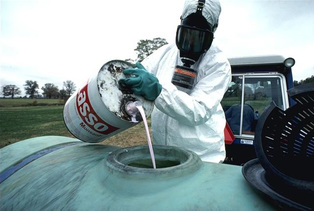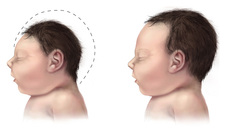 It's safe. Trust me. It's safe. Trust me. Add a new word to your everyday vocabulary. Put it next to Zika Virus. Physicians in Brazil are sounding the alarm about a pesticide added to drinking water to stop the emergence of mosquitos. Pyripoxyfen is a chemical produced by Sumitomo Chemicals, an associate of Monsanto, that is commonly referred to as a growth inhibitor. It is an endocrine disruptor that interferes with immature insect growth, preventing normal development. Pyripoxyfen was first introduced in Japan in 1995. It has been used in the US to control pests on cotton plants. Its application uses have steadily expanded to include many domestic uses from controlling cockroaches to fleas on house pets. California has researched this effective poison. They have found that it is 95% effective against mosquitos, interfering with maturation and sometimes killing the larvae. They have found that when the pesticide is introduced to water bodies, it degrades by about 50% in 24 hours. But when the water contains organic matter, the poison is absorbed into the material and persists for longer periods. The Physicians commented: “Malformations detected in thousands of children from pregnant women living in areas where the Brazilian state added Pyriproxyfen to drinking water are not a coincidence, even though the Ministry of Health places a direct blame on the Zika virus for this damage.” GM Watch While there is no definitive connection between the use of a hormone disruptor used to kill insects and developmental deformities in humans, it bears looking at. Humans are not bugs, but many metabolic pathways are similar. For the women who have had babies born with developmental deformities it matters little who is to blame. They bear the tragic results. With over 4000 babies born with microcephaly to date, women in some of these S. American countries are trying to re-open the abortion debate. Others are not waiting and have obtained clandestine abortions. Sources: GM Watch University of Hertfordshire California Department or Pesticide Regulation Abrasco
1 Comment
 Comparison of microcephaly vs normal skulls Comparison of microcephaly vs normal skulls The Zika Virus is in the world’s headlines. It burst onto the world consciousness recently when thousands of babies in Brazil were born with abnormally small heads. Many of the newborns are healthy, but will require lifetime support. Not all micro encephalic babies survive. When an investigation of one deceased child was performed, the virus was found in its brain. Previously the Zika Virus was thought to be a relatively harmless invader that caused a mild reaction. Many people that had been infected were not aware of the virus in their blood stream. There’s more bad news about this emerging health problem. Zika is present in other South American countries as well. The health minister in Columbia is sounding the alarm about Guillain-Barre Syndrome(GBS). The virus is implicated in triggering the auto immune reaction that can cause paralysis, and in some cases, death. Normally few people present with GBS. Columbia is reporting hundreds of cases linked to Zika. “In the past week we have seen a substantial increase in the number of people reported with Guillain-Barré,” said health minister Alejandro Gaviria, referring to a rare syndrome that causes a person’s own immune system to damage nerve cells, leading to muscle weakness and sometimes, paralysis.” The Guardian WHO has declared the emerging Zika viral disease a “Public Health Emergency of International Concern”. The disease caused by the virus is known to spread by mosquitoes, but there is some anecdotal evidence that it can be passed human to human via body fluids. In Canada, the organization responsible for the blood banks has announced new regulations regarding donations from people suspected of exposure. Originally identified in Africa in 1947, the virus has now spread throughout Africa, the Middle East, India, SE Asia and Pacific Islands as well as S. America and Central America. At this time, countries that have cold winters seem to be immune to the mosquito that spreads the virus. Sources: National Institute of Neurological Disorders and Stroke The Guardian From Africa it spread to Asia and from there to some of the islands of Micronesia. It was spread by mosquitoes from the Aedes genus. In 2007 a mutation likely occurred which made the virus far more dangerous.
The virus has been transmitted sexually in one documented case. A biologist who was bitten by mosquitos in Africa, contracted the virus. When he returned to the US he had the disease in a mild form. He had sex with his wife and she came down with the disease as well. She was never exposed to the Aedes mosquito. The Aedes mosquito is a heat loving creature. It has been spreading northward from the Caribbean and S. America. Puerto Rico recorded its first case in December 2015. It is expected to invade the continental US within the year. Health care providers have no treatment, no vaccines to prevent the disease. They do have advice how to avoid the bloodsuckers. Wear insect repellent, wear long sleeves and long pants. For many of the countries that depend on the ‘snowbirds’ seeking warm, sunny holidays in the tropics the economic fallout of dire warnings about Zika can stress economies. The gradual warming of the Earth may bring more of these very unpleasant surprises. Sources: CNN CDC |
Barbara McPherson
Blogger, gardener, farmer. Working toward food security and a 30 foot
diet. Addicted to reading. Love this planet, especially my little corner
on Vancouver Island, Canada Archives
October 2016
Categories
All
|


